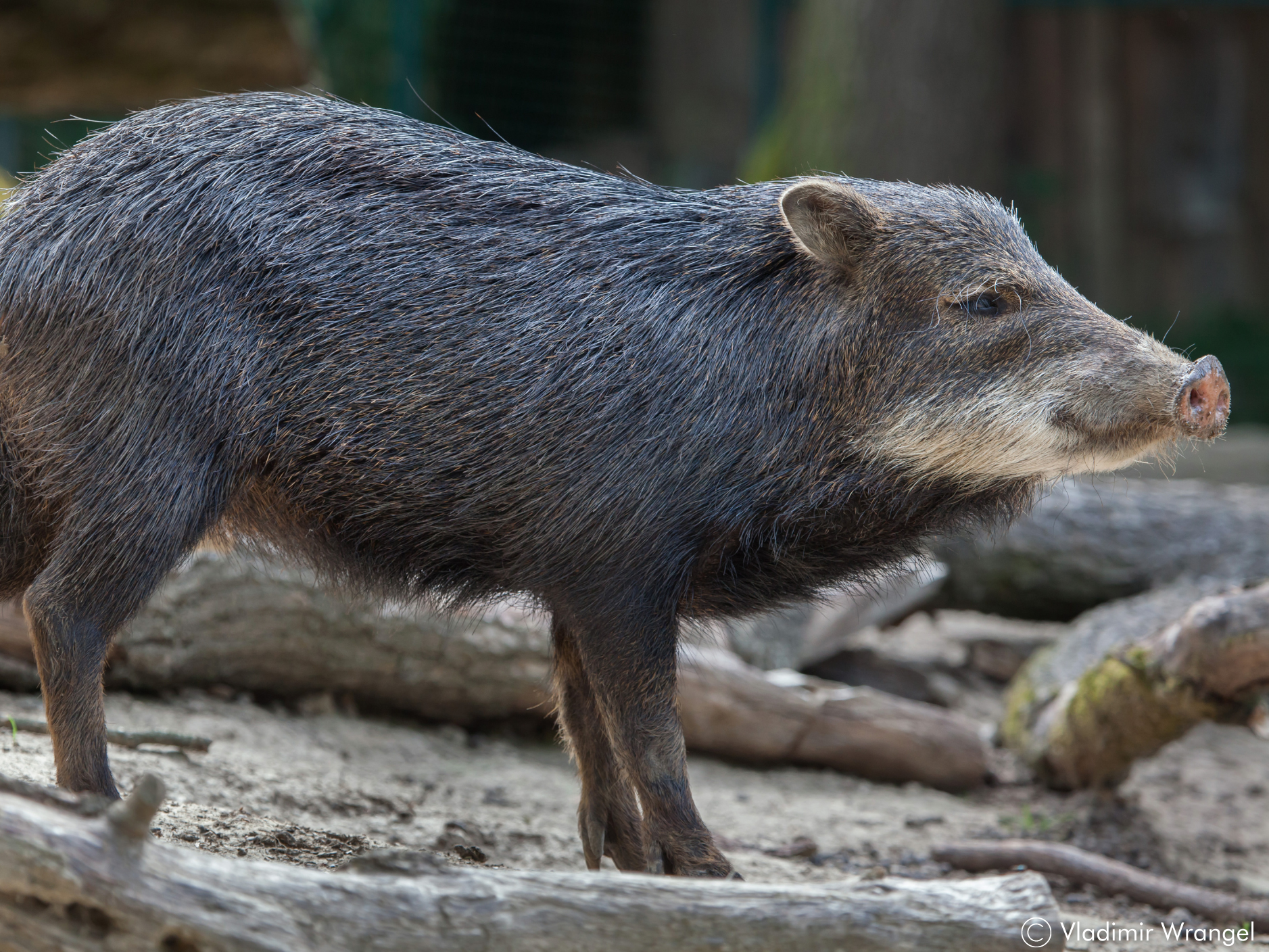The white-lipped peccary (Tayassu pecari) is a species of pig native to the Tayassuidae family found in Central and South America.
It is terrestrial and gregarious, it likes to form herds of 50 to 300 individuals and can be found in the 5 Great Forests. Sadly, according to research, white-lipped peccaries have declined by as much as 87 percent to 90 percent from their historical range in Central America.
It is generally a diurnal animal, traveling long distances, up to 10 km per day! In addition, peccaries play a critical ecological role by dispersing seeds and creating water wells that benefit other animals.

In the IUCN red list, it is listed as a Vulnerable species, but the populations in Mesoamerica are in critical danger and decline. It faces many threats, such as habitat loss due to livestock expansion and epidemics of diseases transmitted by domestic animals, and illegal hunting. Hunting has also contributed to white-lipped peccary declines, as large numbers of peccaries are frequently massacred at one time—especially during the dry season when they congregate at water holes. White-lipped peccary meat is used for local consumption but is also prized in illicit markets and targeted by sport and market hunters.
Although population estimates for white-lipped peccaries are difficult to calculate precisely, experts estimated that these same transboundary areas likely harbor the highest populations of remaining peccaries. For example, the entire Maya Forest, in Mexico, Belize, and Guatemala, hosts the largest white-lipped peccary population stronghold in Mesoamerica, with an estimated population of around 5000 individuals. The remote forests in the bi-national Moskitia, spanning Nicaragua and Honduras, may harbor around 3000 white-lipped peccaries.